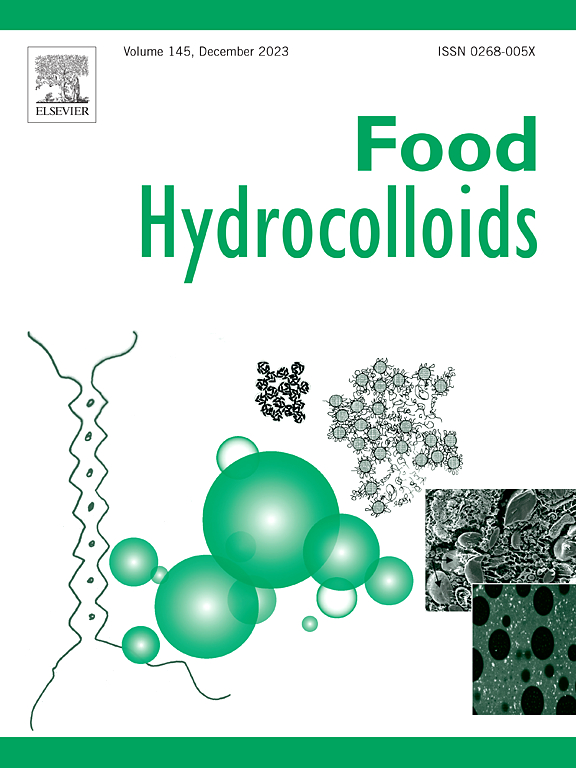Effects of milk protein concentrate decalcification on casein micelles as carriers for lutein
IF 11
1区 农林科学
Q1 CHEMISTRY, APPLIED
引用次数: 0
Abstract
The effects of partial calcium depletion of milk protein concentrates (MPC) on the dissociation of casein micelles were investigated. MPC after decalcification with varying calcium content (0.93, 0.80, 0.69, 0.53, 0.41 and 0.39 mmol/L) were produced by ion-exchange treatment. The compositions and structural properties of the concentrates were analyzed using SDS-PAGE, UV–Vis absorption and fluorescence spectroscopy, circular dichroism spectroscopy, X-ray diffraction, and measurement of surface hydrophobicity. Although the decalcification treatment had no effect on the protein composition of MPC, it was found to influence the micellar micromorphology of the casein micelles, as shown by transmission electron microscopy. Decreases in calcium content from 0.93 to 0.41 mmol/L were associated with reductions in the sizes of the micelles which were spherical in shape. The micelles delete changed shape at 0.39 mmol/L (calcium content). The zeta potential of MPC and decalcified MPC micelles changed as calcium concentration decreased. Decalcified MPC with the lowest calcium content had the highest surface charge, with differences in surface charge likely influencing micelle dissociation. The decalcification of MPC significantly influenced the loading and release of lutein by the micelles. At 0.69 mmol/L calcium content, MPC micelles had well-dispersed spherical shapes with markedly smaller particle size, together with the highest loading capacity and encapsulation efficiency. Simulated digestion showed that the micelles of moderately decalcified milk protein concentrates promoted lutein stability and its release in the intestine. These findings open up the possibility of fabricating MPC with customized functionality, especially in the delivery of fat-soluble pigments in food industry.

浓缩牛奶蛋白脱钙对作为叶黄素载体的酪蛋白胶束的影响
本文章由计算机程序翻译,如有差异,请以英文原文为准。
求助全文
约1分钟内获得全文
求助全文
来源期刊

Food Hydrocolloids
工程技术-食品科技
CiteScore
19.90
自引率
14.00%
发文量
871
审稿时长
37 days
期刊介绍:
Food Hydrocolloids publishes original and innovative research focused on the characterization, functional properties, and applications of hydrocolloid materials used in food products. These hydrocolloids, defined as polysaccharides and proteins of commercial importance, are added to control aspects such as texture, stability, rheology, and sensory properties. The research's primary emphasis should be on the hydrocolloids themselves, with thorough descriptions of their source, nature, and physicochemical characteristics. Manuscripts are expected to clearly outline specific aims and objectives, include a fundamental discussion of research findings at the molecular level, and address the significance of the results. Studies on hydrocolloids in complex formulations should concentrate on their overall properties and mechanisms of action, while simple formulation development studies may not be considered for publication.
The main areas of interest are:
-Chemical and physicochemical characterisation
Thermal properties including glass transitions and conformational changes-
Rheological properties including viscosity, viscoelastic properties and gelation behaviour-
The influence on organoleptic properties-
Interfacial properties including stabilisation of dispersions, emulsions and foams-
Film forming properties with application to edible films and active packaging-
Encapsulation and controlled release of active compounds-
The influence on health including their role as dietary fibre-
Manipulation of hydrocolloid structure and functionality through chemical, biochemical and physical processes-
New hydrocolloids and hydrocolloid sources of commercial potential.
The Journal also publishes Review articles that provide an overview of the latest developments in topics of specific interest to researchers in this field of activity.
 求助内容:
求助内容: 应助结果提醒方式:
应助结果提醒方式:


